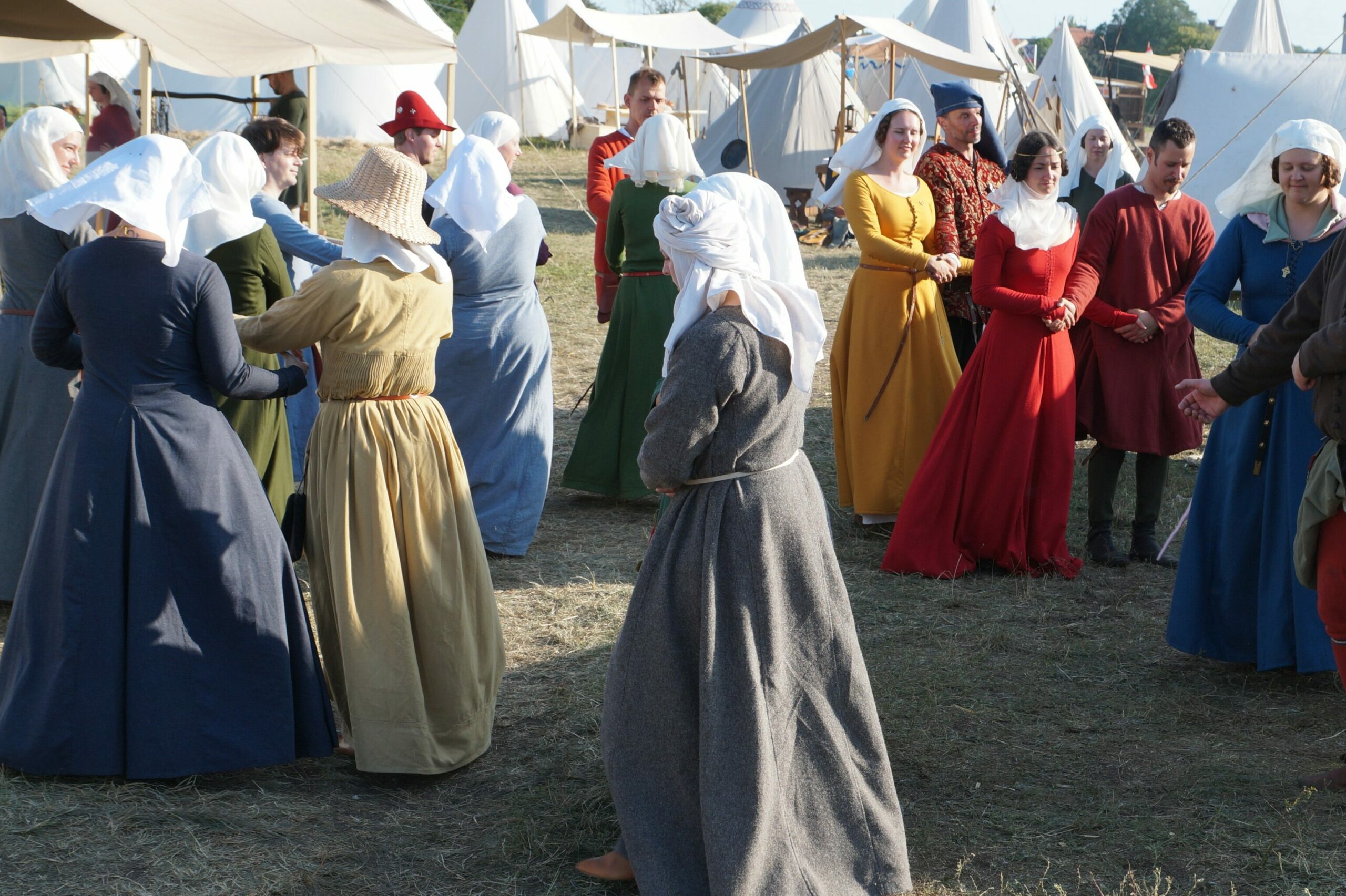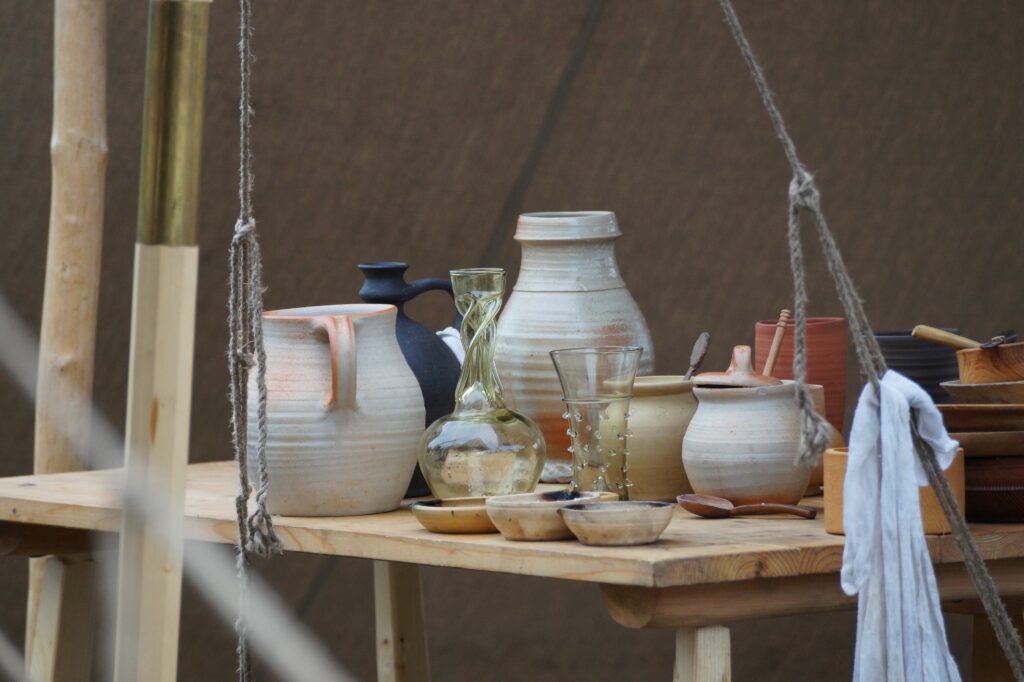
Our aim is to display the material culture of the Baltic region in 1361, and closely related items fit for Northern European Middle Ages. Participants are required to submit photos of their clothing and equipment, as well as photos of tents (if planning to stay in the camp).
Clothing
For women – basic required kit
– Shift/smock made of linen (this is optional)
– 14th century style dress (made of wool)
– Veil (made of linen, silk or wool)
– Socks/short hose (of wool, sewn or needlebound)
– Turnshoes or soled hose
For women, there is now a book by Maria Neijman and Peter Ahlqvist, issued by Chronocopia publishing, detailing a close approximation of our dress standard:
Historisk dräkt – inifrån och ut: Kvinnodräkten i Norra Europa 1360-1415

For men – basic required kit
– Shirt made of linen (this is optional)
– Braies (made of linen)
– Kirtle or other garment in 14th century style (made of wool)
– Belt
– Turnshoes or soled hose
General dress regulations
– If you are portraying a person of noble birth, you may use silk in your clothes.
– There is very little evidence of dyed linen fabrics in the area, so we ask you NOT to bring colored linen to this event – linen garments must be white or unbleached.
– The colors you choose for your wool/silk garments should be possible to create with natural dyes.
– Invisible seams may be machine-sewn. Visible seams must be hand-sewn.
– Adornments such as tattoos and piercings must be hidden. This includes hair dyed in non-natural colors. Please use contacts or obtain a pair of Medieval-style glasses.
– St Brigid’s caps may be used, but should always be combined with a veil.
– Younger women can also wear their hair uncovered, with a 14th century hairstyle.
– No visible underwear- this goes for men and women. For men; make sure your kirtle / jacket is long enough to cover your braies. For women; no short-sleeved kirtles or sleeveless surcotes directly on top of linen shifts.
– Modern makeup is not allowed.
Camp equipment
Tents
All tents must be traceable to sources from 1300-1480, and be unbleached or white. We would like you to have your tents open to the public, and therefore they should be furnished according to the period and the type of person you portray. No visible modern objects are permitted. Noble folk should display reasonably upscale furniture in their tents, while simpler people should, of course, have simpler furniture. This means, for example, that no beds may be used in soldiers’ tents. Straw will be available for bedding.
All camp equipment and furniture should be supported within sources from 1300-1400. This includes personal equipment such as eating utensils and cooking equipment.

For each camp fire there has to be at least one fire extinguisher. Each group will have to provide a fire extinguisher for themselves.
